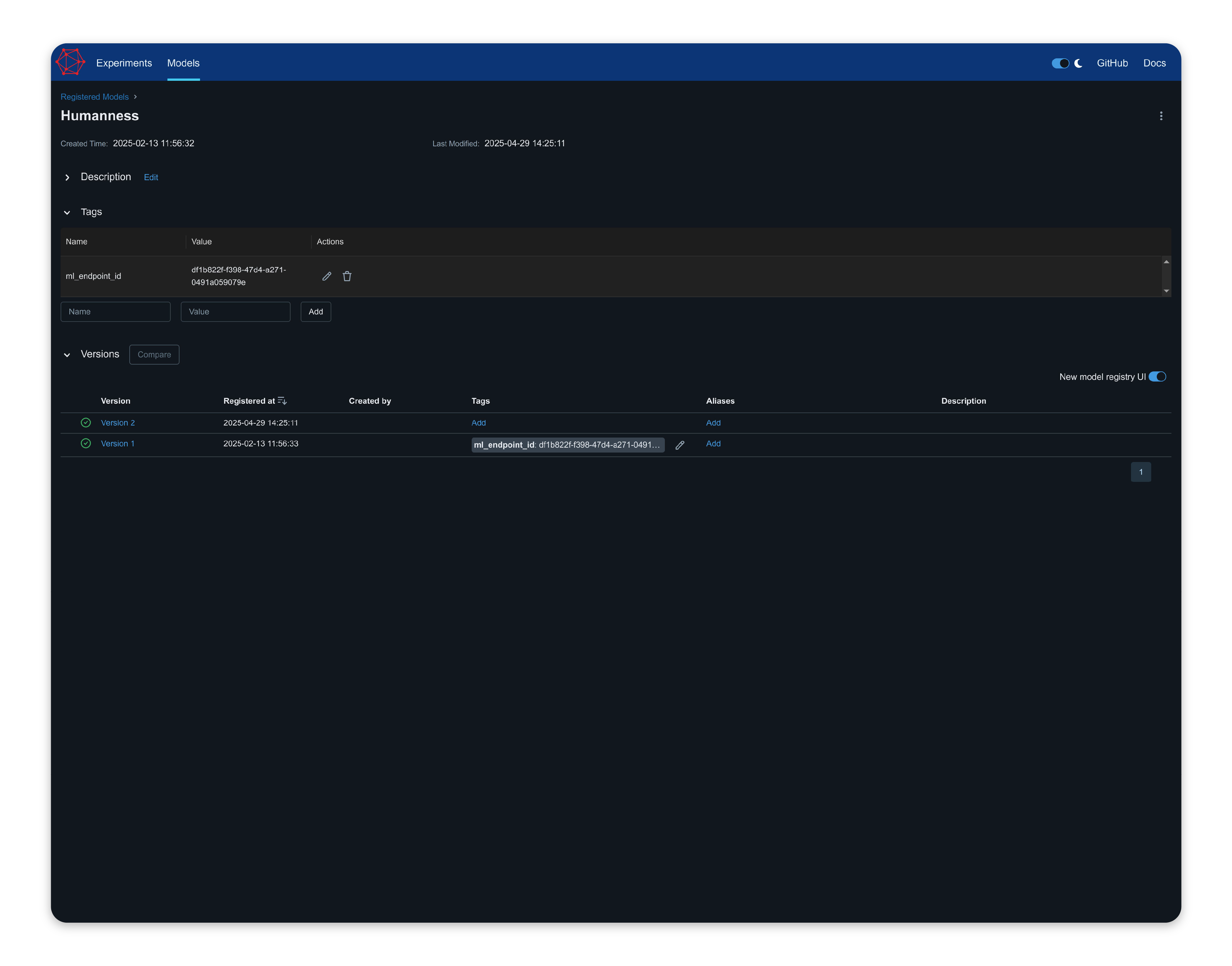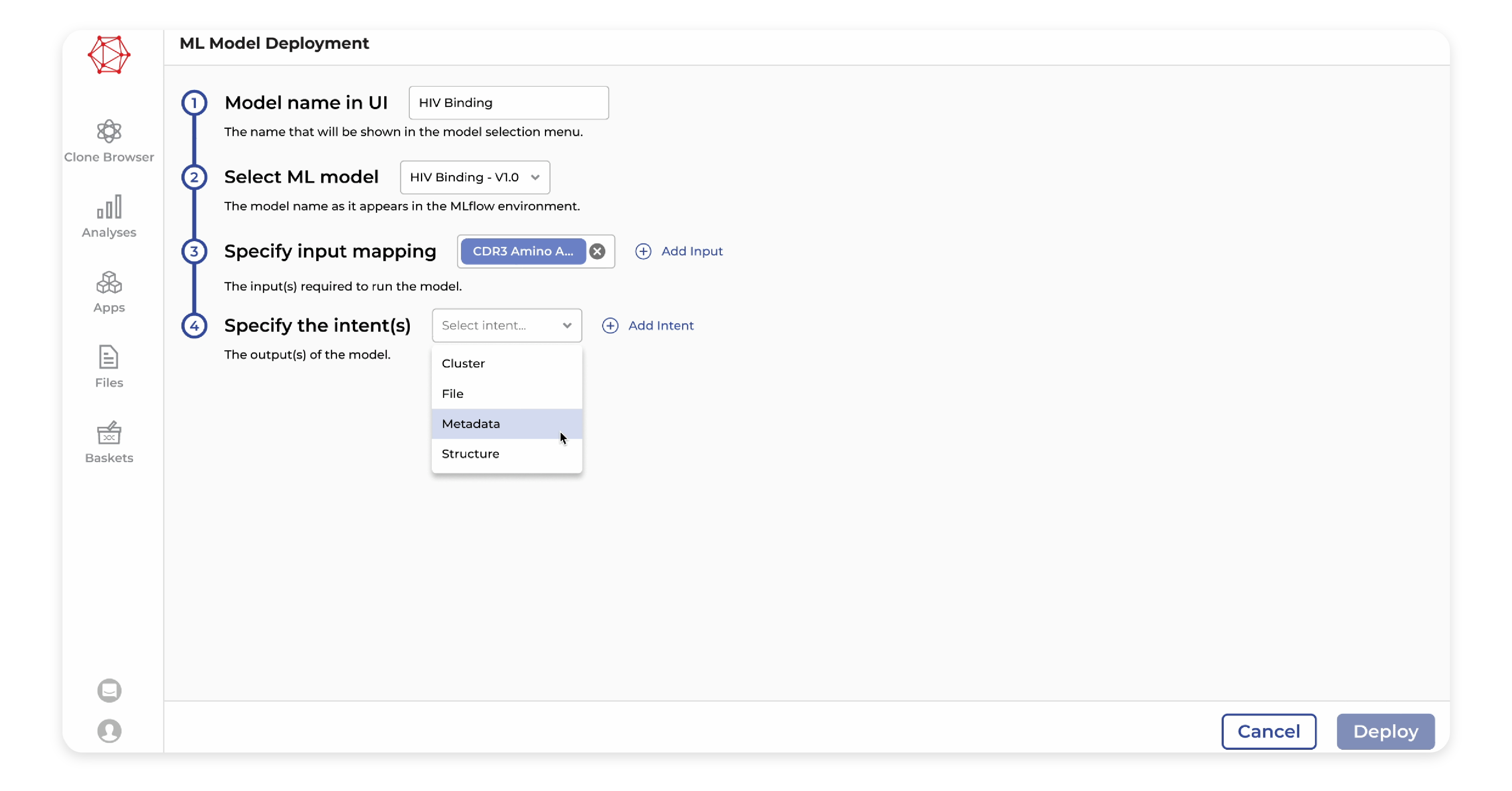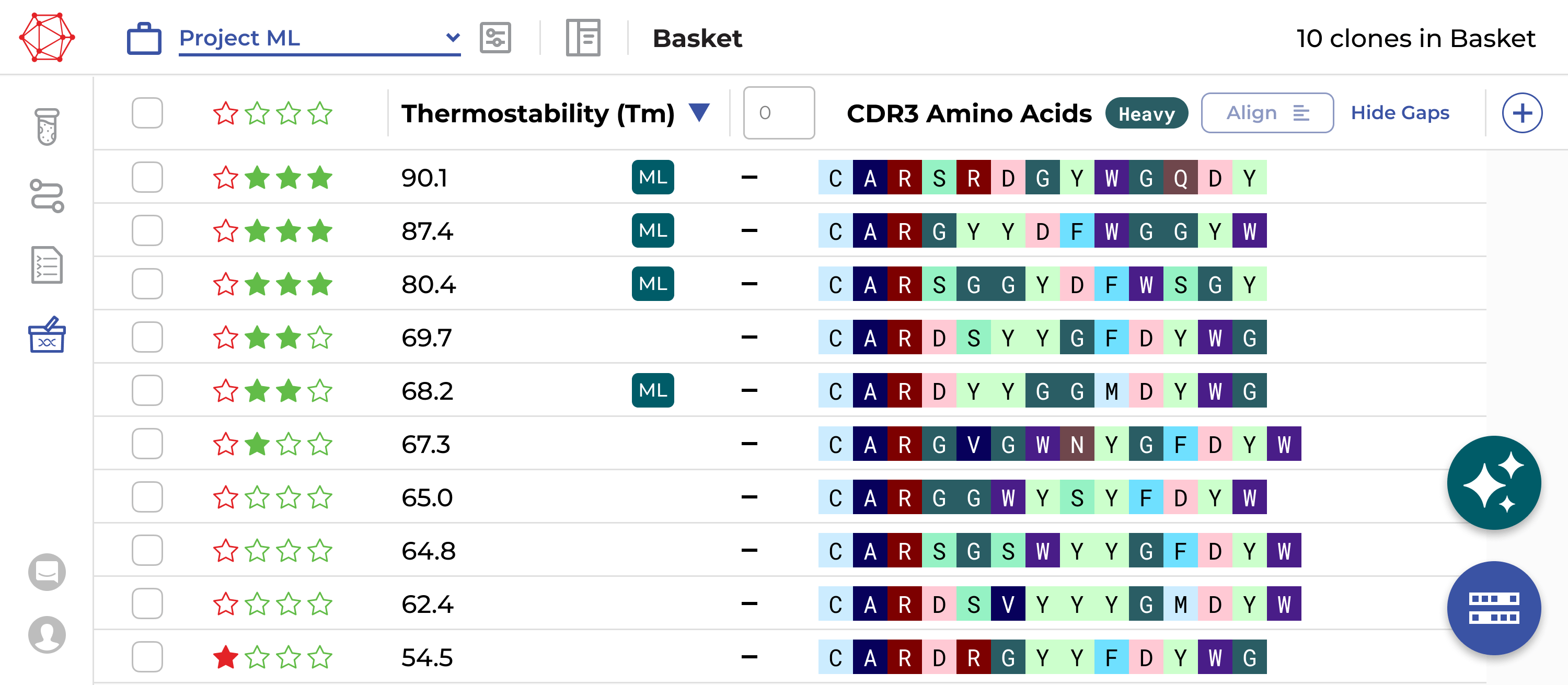AI integration
Standardized, reproducible machine learning
Unlocking the full potential of AI in biologics discovery takes more than data and algorithms. It requires an environment where ML teams can develop, manage, and deploy models at scale. In biologics discovery, large datasets can be hard to obtain and models are often generated in an iterative way while the data improves incrementally. Meanwhile, lab and data science teams often work in isolation, leading to hurdles for data scientists in obtaining the most up-to-date data, and hurdles for lab scientists in consuming the ML models in their analyses.
The ENPICOM Platform provides a structured, reproducible, and collaborative environment for biologics-focused MLOps. Designed to support iterative model development and seamless handoffs between lab and data science teams, it bridges the gap between experimental and computational workflows. Models can be deployed directly into analysis environments, enabling lab scientists to apply predictions and insights in their day-to-day workflows.
Optimized model development
ML science and lab teams often operate independently, creating barriers for ML scientists to access current experimental data, while lab scientists struggle to incorporate ML models into their analytical workflows. Optimizing model development in biologics discovery and engineering requires high-quality data and close collaboration.
Comprehensive model lifecycle management
As organizations generate an increasing number of models using different frameworks and training datasets, tracking these assets becomes as complex as their creation. Rigorous documentation of model performance metrics, training datasets, and dependencies ensures all stakeholders have the necessary context to evaluate and compare models effectively.
Seamless deployment into real-world biologics discovery
Models typically perform well in controlled development environments but must demonstrate their true value when applied to actual biologics discovery and engineering projects. Rapid, seamless deployment of models into production workflows enhances their impact and closes the feedback loop, allowing continuous refinement based on real-world results.
Fully integrated MLOps that brings AI to the lab
Model performance tracking
Track and compare key metrics and task-specific scores across different models and training runs. Maintain full visibility into the data and code versions used so you can confidently evaluate their performance in context and ensure that only robusts, production-ready models are deployed.
Model registry
Ensure proper versioning, accessibility, and compliance with best practices through an intuitive model registry. Maintain a clear history of versions, datasets, and results, enabling scientists to trace data origins, track model evolution, and ensure reproducibility without disrupting workflows.

Model deployment
ML scientists can easily control which ML models are made available to lab scientists. Once a model is deployed, it becomes immediately available in the lab scientists’ analysis pipeline, ensuring full integration between environments for seamless adoption and immediate impact.

Effortlessly manage and access all data
Instant access to ML-ready data
Querying for labeled datasets is now super simple, enabling data scientists to easily access the relevant data in seconds. This removes the need to search through scattered data sources or manually transform data into structured, ML-ready formats, significantly streamlining the preparation process.
No data migrations required
Our solution eliminates the need for costly and time-consuming data transfers between data storage solutions. By leveraging AWS cloud technologies, data can be directly accessed and used for model training without the need to migrate it, making the process more efficient and reducing operational overhead.
All scientific data seamlesly managed
Historical data from scientists is efficiently managed within a centralized database, eliminating data silos. As data ingestion is a key step in their daily research workflows, it ensures that data entry becomes a natural part of their routine, establishing consistent and accurate data storage, enhancing data availability and integrity.
Real-time model improvement
New experimental data can be easily retrieved and used as it is being generated, for benchmarking model performance or further tuning AI models. This seamless access to any data ensures that models can be continuously refined and improved based on latest data generated in the lab.
How does it work?
1
2
3
Selecting the best candidates
Because the model interface is known, the lab scientists will not have to configure anything when running the model: the platform knows what metadata is used as input, and where to store the output of the model.
From the perspective of the lab scientists, they select their candidates, choose the newly available thermostability model from a list of models, and see the thermostability predictions become available as newly created metadata.
Leaders in scientific research choose ENPICOM














Power your ML journey with seamless collaboration between data and lab scientists
Contact us for a personalized demo or consultation.
